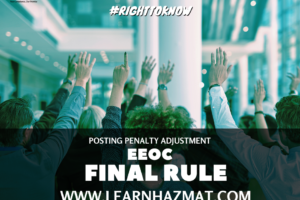Firework Safety, Continued
June 28, 2013 | Earlier this week, we discussed the different hazard class divisions for common Fourth of July celebratory fireworks. Here is a look at the grouping of the hazard classes according to their compatibility:
"A" – Primary explosive substance
"B" – Articles containing a primary explosive substance and not containing two or more effective protective features; some articles, such as detonators for blasting, detonator assembled for blasting and primers, and cap-type are included
"C" – Propellant explosive substance or other deflagrating explosive substance or article
"D" – Secondary detonating explosive substance or black powder or article containing a secondary detonating explosive substance
"E" Article containing a secondary detonating explosive substance, without means of initiation, with a propelling charge
"F" – Article containing a secondary detonating explosive substance, with its means of initiation, with a propelling charge
"G" – Pyrotechnic substance or article containing a pyrotechnic substance, or article containing both an explosive substance and an illuminating, incendiary, tear-producing or smoke-producing substance
"H" – Article containing both explosive substance and white phosphorus
"J" – Article containing both an explosive substance and a flammable liquid or gel
"K" – Article containing both an explosive substance and a flammable liquid or gel
"L" – Explosive substance or article containing an explosive substance and presenting a
special risk (due to water-activation or presence of hybergolic liquids, phosphides, or
phyophorc)
"N" – Article containing only an extremely insensitive detonating substance
"S" – Substance or article so packed or designed that any hazardous effects arising from accidental functioning are limited to the extent that they do not significantly hinder or prohibit firefighting or other emergency response
An explosive may not be packed in the same outside packaging with any other material that could, under normal conditions of transportation, adversely affect the explosive or its packaging
When transporting these hazards here is what you need to keep in mind:
Hardware necessary for assembly of explosive articles at the point-of-use may be packed in the same outside packaging with the explosive articles. The hardware must be securely packed in a separate inside packaging. Sufficient cushioning materials must be used to ensure that all inside packaging are securely packed in the outside packaging.



